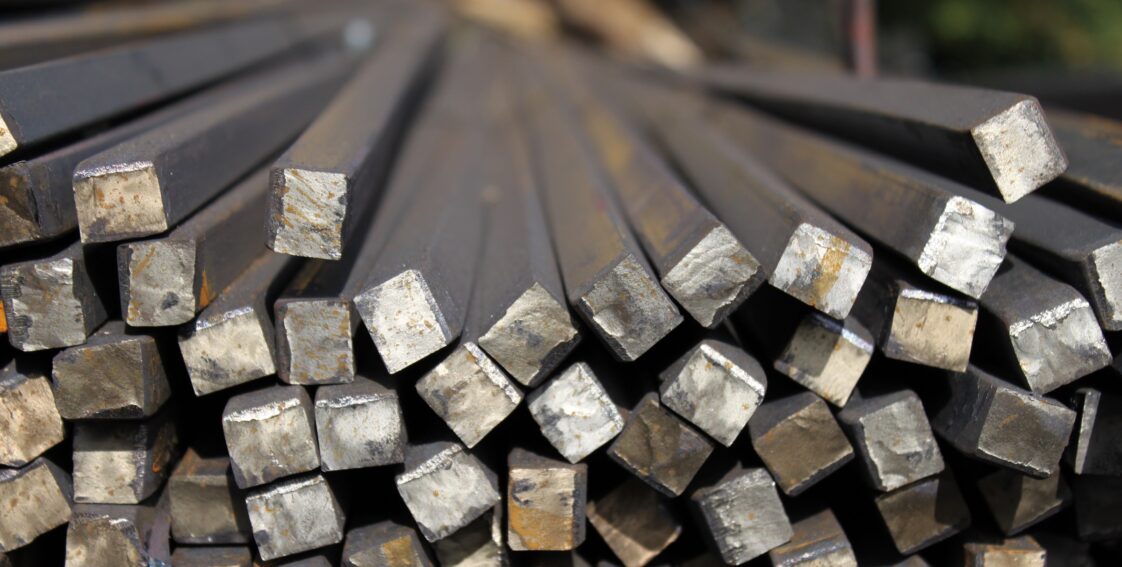
Carbon Steel Basics
By its definition, steel is an alloy metal made up primarily of iron and carbon. Since steel is an extremely versatile metal, it has a wide variety of applications. However, there are different types of steel being produced, such as carbon steel.
Carbon Steel Properties
The AISI (American Iron and Steel Institute) has three general classes of carbon steel depending on the steels carbon content:
Low Carbon Steel
Low-carbon steel will typically have a maximum of 0.3% carbon. Also called mild steel, low carbon steel is used for everything from wire rod, to bar, to tubing. Its carbon steel properties make it useful in fasteners, automotive shafts, and mesh.
Medium Carbon Steel
Medium-carbon steel has carbon content ranging from 0.3% to 0.6%. It’s often hardened and tempered with heat treatment. Common uses include axles, gears, pipelines, and couplings.
High Carbon Steel
High-carbon steel typically contains 0.6% to 1% carbon. It has higher strength but is difficult to form, weld, or cut. High carbon steel is typically used in applications requiring higher tensile strength and wear resistance, such as wire rope or high-strength wire.
Carbon Steel Applications
Carbon steel is used in a wide variety of applications. Some of the most common applications include construction projects, including buildings and bridges. In addition, carbon steel is critical in the production of automobiles, as it is used in gears, shafts, rails, and axles.
Low Carbon Steel Applications
Low carbon steel doesn’t have as high of a tensile strength as high carbon steel. Therefore, low carbon steel is commonly used in steel frame buildings because of its unique properties. Low carbon steel is also frequently used in pipelines, cookware, and machine parts. Finally, low carbon steel can also be found in metal gates and building foundations.
Medium Carbon Steel Applications
Medium carbon steel has a relatively high tensile strength. Falling between low carbon steel and high carbon steel, medium carbon steel is commonly used in train tracks and railway systems. Medium carbon steel is also used in train wheels and crankshafts.
High Carbon Steel Applications
High carbon steel has much better tensile strength. Therefore, it is commonly used to make cutting tools, including blades and punches. High carbon steel can also be found in springs and dies. Finally, high carbon steel is also used in high-strength wire, which is used throughout numerous industries.
AISI/SAE Carbon Steel Grades
According to the Society of Automotive Engineers (SAE), carbon steel can be graded in a variety of ways. These include:
- Low carbon steel includes 0.05 percent to 0.25 percent carbon and up to 0.4 percent manganese
- Medium carbon steel includes 0.29 percent to 0.54 percent carbon and 0.60 percent to 1.65 percent manganese
- High carbon steel includes 0.55 percent to 0.95 percent carbon and 0.30 percent to 0.90 percent manganese
AISI Material Grades
| SAE designation | Type, and composition by weight |
| Carbon steels | |
| 10xx | Plain carbon (Mn 1.00% max.) |
| 11xx | Resulfurized |
| 12xx | Resulfurized and rephosphorized |
| 15xx | Plain Carbon (Mn 1.00–1.65% max.) |
Contact King Steel Corporation Today
If you are looking for carbon steel for an upcoming project, you need an experienced distributor who can lead the way. That is where we can help you. We are King Steel Corporation, and we have a tremendous amount of experience working with a variety of steel products, including wire rods, steel wires, and steel bars. It would be our pleasure to leverage our experience to help you. Contact us today to learn more about our steel products.